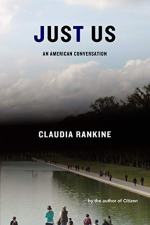
|
| Name: _________________________ | Period: ___________________ |
This test consists of 15 multiple choice questions and 5 short answer questions.
Multiple Choice Questions
1. What does Rankine's white male friend send her from the diversity workshop he attends?
(a) A request that she call him and manufacture a reason for him to have to leave.
(b) Crazy emojis.
(c) Desperate looks.
(d) Flowers.
2. About how many whites do not have any Black friends, according to a study cited by the Washington Post reporter Christopher Ingraham?
(a) 55%.
(b) 35%.
(c) 75%.
(d) 20%.
3. What subject did philosopher Charles Mills and sociologist Wulf Hund edit a volume of essays about?
(a) Simianization.
(b) Reparations.
(c) The history of slavery in Britain.
(d) The history of the American Civil War.
4. What event occurred in Washington D.C. on August 8, 1925?
(a) A hurricane that damaged the city.
(b) A large Ku Klux Klan rally.
(c) A deadly clash between anti-racist protestors and white supremacist groups.
(d) Bombings of several Black churches.
5. What does one white man whose son did not gain entry by early admission to Yale tell Rankine he thinks is part of the problem?
(a) His son did not have enough extra-curricular activities.
(b) The Asians are flooding the Ivy Leagues.
(c) His son's grades were not high enough.
(d) He did not donate any money to the university.
6. Who is Rankine's favorite musical group?
(a) Bruce Springsteen.
(b) The Commodores.
(c) Bob Dylan.
(d) Marvin Gaye.
7. Who popularized the phrase "white privilege"?
(a) Evie Barlow.
(b) Peggy McIntosh.
(c) Marshall McLuhan.
(d) Farrow Garland.
8. What does Notes on the State of Virginia conclude that the Black race could not produce?
(a) A scientist.
(b) A musician.
(c) A dancer.
(d) A poet.
9. Which social justice activist talked often about the so-called culture of whiteness?
(a) Justin Roamley.
(b) Ruby Sales.
(c) Fabian Fabrize.
(d) Marshall Maverick.
10. What year was the document Notes on the State of Virginia written in?
(a) 1904.
(b) 1805.
(c) 1781.
(d) 1790.
11. What did police often ask Rankine and her husband when they were pulled over in New York City and New Jersey?
(a) How they knew each other.
(b) Where they were going.
(c) Whether they had weapons.
(d) How much money they had.
12. What is the title of the class Rankine teaches on race at her university?
(a) The Tulsa Massacre and American History.
(b) The History of Whiteness in America.
(c) Racism in America.
(d) Constructions of Whiteness.
13. What does Rankine identify as an "idle thought" when discussing her daughter's school and the white parents there?
(a) The idea of affirmative action.
(b) The idea that someday America might really be a post-racial society.
(c) The idea of a shared anxiety with white parents regarding the lack of diversity at the school.
(d) The idea of playing the race card.
14. How old was Rankine when she met her husband?
(a) 25.
(b) 30.
(c) 45.
(d) 35.
15. Which BBC broadcaster compared the mixed-race royal baby to an ape?
(a) Marie Mayhem.
(b) Charlie Roads.
(c) Danny Baker.
(d) Will Henderson.
Short Answer Questions
1. How does the writer Rachel Kaadzi Ghanash describe the online community of violent white supremacists like the 2015 Charleston church shooter?
2. What did the man on the plane tell Rankine he misrepresented to her in his story about his hometown?
3. Which poet described love partially as "a close reading"?
4. Which West Indian writer does Rankine refer to in Part I in her section about air travel?
5. From what event does Rankine include a photograph of men giving a Nazi salute in front of a burning swastika in Part II?
|
This section contains 629 words (approx. 3 pages at 300 words per page) |

|




